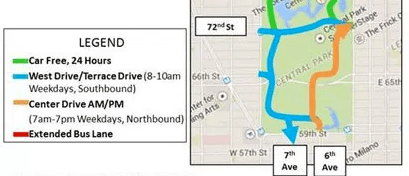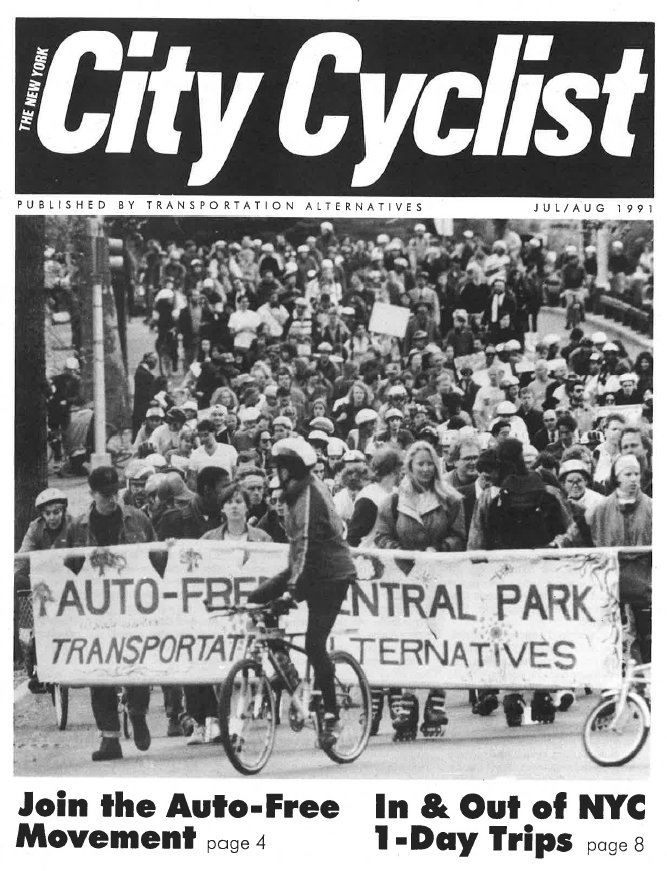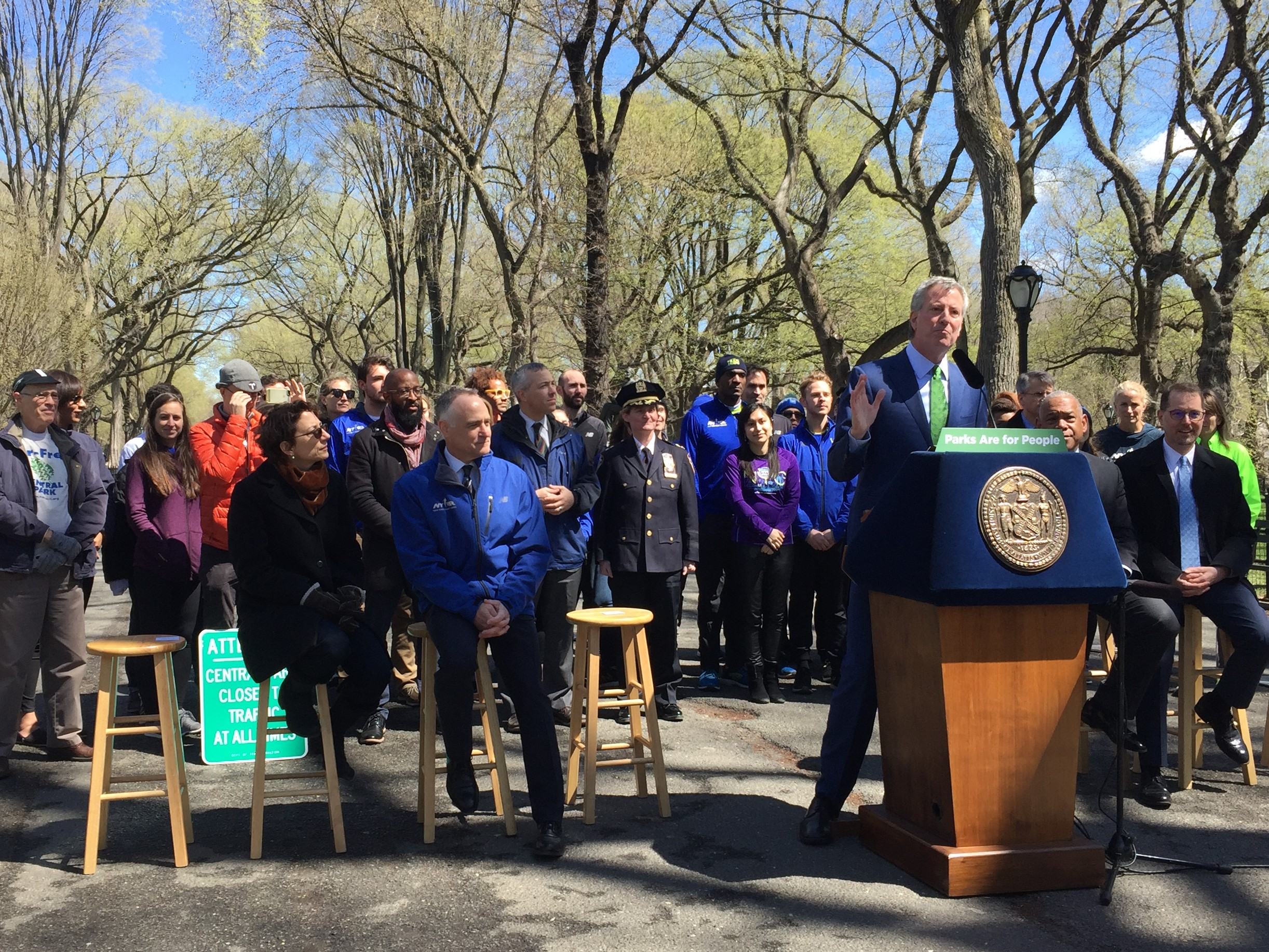Central Park will go car-free forever on June 27, Mayor de Blasio announced today, the culmination of a campaign that has spanned seven mayoralties and more than 50 years.
"This park was not built for automobiles. It was built for people," de Blasio said this morning. "People walking, people biking -- that's what this park will now be about."
Central Park predates the automotive era, but as cars proliferated in the city, the oasis of the park became a shortcut for motor vehicle traffic. Motorists had unfettered access to the park's loop roads until the 1960s, when activists first prevailed on City Hall to begin limiting the presence of automobiles.

Currently, cars are permitted on the West Drive and Terrace Drive in the southbound direction from 8 a.m. to 10 a.m. on weekdays and on the Central Drive in the northbound direction from 7 a.m. to 7 p.m. on weekdays.
The most recent expansion of Central Park's car-free zone came in 2015, when the de Blasio administration prohibited cars above 72nd Street.
There were many incremental improvements before that -- extensions of car-free hours, restrictions on access points, narrowing of the right-of-way for motor vehicles. Traffic volumes have gradually fallen as those measures were put in place. In 1991, traffic peaked at 2,500 cars per hour on the Central Park loop roads. Today, the peak hour sees just 350 northbound vehicles and 500 southbound, according to DOT.
As with Prospect Park, which went fully car-free at the beginning of this year, the traffic nightmare predicted by opponents of a car-free park never materialized.
"It takes a few weeks, but people find new routes and blend into the grid," said Transportation Commissioner Polly Trottenberg.
The campaign for a car-free Central Park has taken generations to reach this point. No one has worked harder for it than Ken Coughlin, the leading advocate for more than two decades.
"I'm at a loss for words because I've been looking forward to this day for 26 years," he said. "None of the incremental closings, car restrictions, resulted in any additional traffic on surrounding streets, and DOT had data to support that. It was just a matter of them believing their own statistics."
Clarence Eckerson has been documenting the car-free Central Park campaign for as long as he's been making Streetfilms. Here's his review to mark this milestone.
The full history goes back to the 1960s, when civic leaders including future mayor Ed Koch and future NYC Greenmarket founder Barry Benepe led demonstrations against cars in Central Park. They won the first restrictions on motor traffic, with the Lindsay administration launching car-free summer Sundays in 1966.
Since 1979, Transportation Alternatives has campaigned to get cars out of Central Park. It's always been an issue large numbers of New Yorkers feel strongly about. In the 1990s, TransAlt car-free park rallies turned out thousands of people. A 2005 petition drive gathered 100,000 signatures.
A few years ago, Coughlin led an effort that got nearly every community board in Manhattan to vote for a car-free park.
Today's historic announcement belongs to everyone who, for the past half century, has worked on this campaign.







